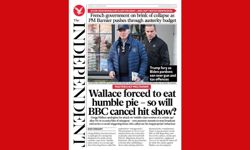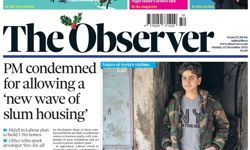Take Coke. A universal brand. It’s everywhere. In every food retailer, restaurant, fast food stall. So why in the last year did they spend $2.8 billion on advertising, and $5.43 billion on “selling”? Because they know that to remain at the head of the market, they need to be top of mind among their consumers. In fact they spent 26% of their turnover on these two activities. And then there is their ability to launch Coke Lite, Coke Zero, and all their other brands. Our inability to diversify is the subject of a different rant!
Then there’s Unilever. They spent 24% of turnover on sales and distribution.
By comparison, in the USA at least, newspapers spent less than 1% on sales and advertising, and around 10% on sales and distribution. So that’s less than 5% of Coke’s investment and 20% of Unilever’s investment.
Of course the comparisons are hard to make, but the conclusions are crushing. Newspapers are failing because we are not investing in marketing.
We have long assumed that “being there” is enough. It’s not. In a world where an explosion of media channels and choices are battling for the attention of an increasingly time pressured audience, brand awareness and promotion is more vital than ever before.
I can hear all the accountants, and greedy shareholders clucking, “Why should we be wasting money in unmeasurable branding campaigns, on the basis of a mad Scotsman’s analysis of different industries?” Well the answer is three fold:
* Firstly, if we don’t return to confidently promoting our great newspaper brands, they will be smothered by the alternatives.
* Secondly, the comparison with ‘Fast Moving Consumer Goods’ companies is relevant since few goods have a shorter shelf life, and variable loyalty spectrum, than newspapers.
* Thirdly, at least half the solution lies within the newspaper company, at little or no cost.
Taking these points in turn.
The world is smothered with branding – personally I think there will be backlash against this, in our increasingly eco-friendly, freeware society. But anyway, at the level of circulation, most newspaper readership is local, where newspapers are losing their visibility. This does not imply high cost media advertising, but a strong street presence. In subscription markets, the concept of simply calling prospects is not enough. In single copy markets, newspapers are being pushed out by companies like Unilever and Coke, who are scientifically dominating the point of sale.
The issues of shelf life, loyalty and frequency are vital. Newspapers can no longer assume the breaking news monopoly. Their biggest challenge is not retaining readers – or online visitors – but engaging their regular interest. Coke invest heavily on branding, because they know it builds customer loyalty.
Newspaper readers are notoriously fickle, and generally the wealthier they are, and of more value to advertisers, the less loyal and less frequent they are. In every ad break on TV, the channels promote what is coming up later that evening or later that week. Yet in newspapers we do little promotion of up-coming content. A rule should be that every double-page spread contains at least one “look-ahead” panel promoting forthcoming content. This is as important for single copy markets as it is for subscription markets.
In particular, the shift to the online world is demonstrating some critical behavioural issues that newspapers must address:
* Firstly, there is insufficient linkage between print and digital engagement. Why is it that I can email a Nobel Laureate who writes for the New York Times, but I cannot email my local sports reporter? Is he too important? Or does the newspaper not have the simple process of placing his / her email address at the end of a story and managing the contact?
* As I’ve said before online newspaper usage is at best very thin. People visit rarely, for too short a time, with few page views. But do I see mechanics that encourage me to come back, look for other content that might interest me. In 90% of cases: No.
Newspapers have enormous readerships – in print and online – but they are spread thinly in terms of frequency of usage and time spent. Newspaper companies, and newsrooms in particular, spend little time or creative energy on the issue of encouraging loyalty and retention. This needs to be built into every newspaper employee’s DNA: Frequency. Loyalty. Retention.
Unilever and Coke are obsessed with customer retention. Hence, why they spend so much of their turnover and time on loyalty and frequency.
The methodology is easy to define and implement. The return on investment is simple to measure. The consequence of failing to do so is easy to predict.
So let’s communicate.










